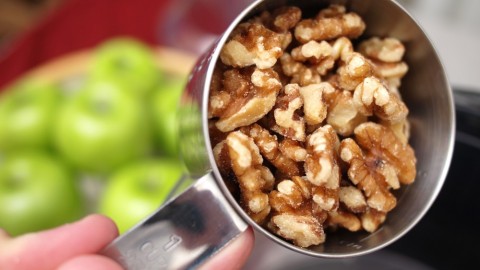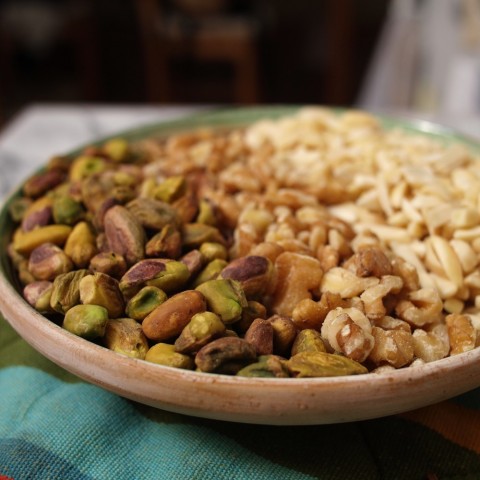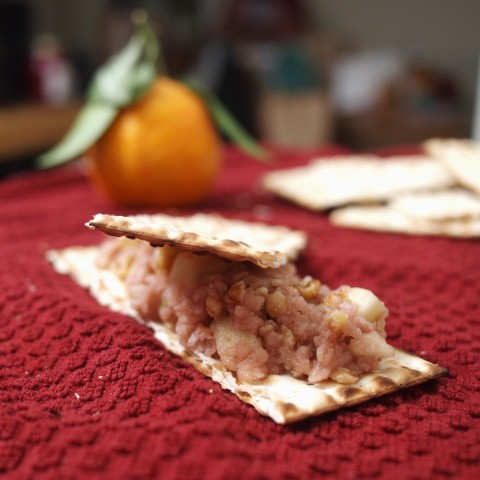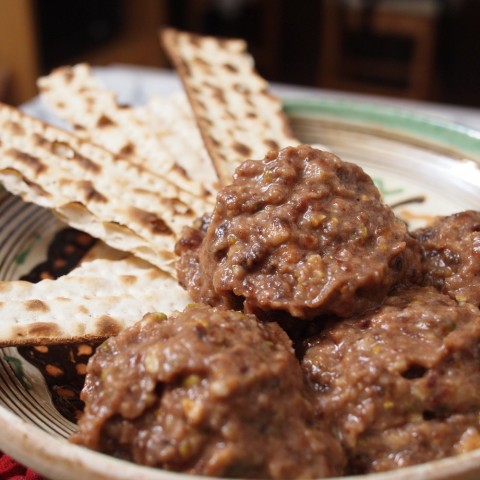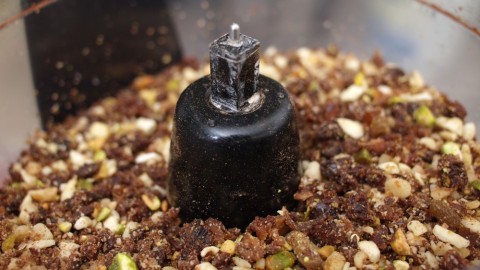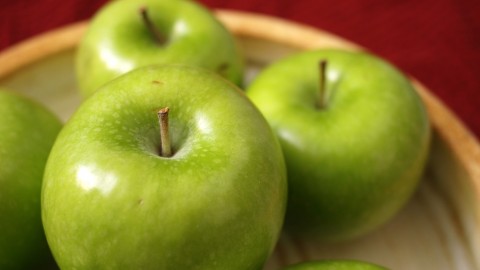Ask me why Monday night is different from all other nights. Come on — ask me. I got four reasons for you right here.
Bitter vegetables, double dipping, hardtack, and — why I oughta!
But seriously, folks: Monday night is different from all other nights in that it’s the first night of Passover. It is one long, well-ordered feast in which the wine starts dribbling in at sundown, and doesn’t stop flowing until legally-mandated closing time at midnight.* And it is — traditionally — my favorite holiday of the year. Or at least, one of them.
Every chance I get, it seems, I like to talk here about how much I enjoy Thanksgiving. I’ve told you all before about how it’s my holiday. I’ve told you about how much fun I have cooking for two days beforehand, baking bread and roasting birds, making vegetables, and curries, and pies, and all sorts of things that are good to eat. And about how much I like stuffing my guests until it’s painful to walk, and then watching them drowse off on the couch, or in chairs, or sometimes in considerably less comfortable places around my living room.
Well, Passover isn’t my holiday. I’ve never made a seder myself, and it’s been a few years — at least — since I’ve been to one. But nonetheless, it is indeed a favorite, and for many of the same reasons.
As with Thanksgiving, I enjoy Passover because it’s a chance to balance creativity and tradition in the kitchen. It’s another one of those occasions where there’s a long, involved meal for a lot of guests, but in which that meal is bounded by strongly held beliefs — in this case, laws — about what can be served, and what absolutely must not. When it comes to Thanksgiving, I alternate between appreciating those boundaries and chafing against them. But with Passover, it seems to me that the restrictions offer a kind of opportunity by which the cook is forced to be all the more creative, because certain kinds of things are off limits.
But more than that, I think, Passover tickles the part of me that is passionately interested in stories. For those few of you who don’t know, Passover celebrates our — by which I mean Jews’ — escape from bondage in the land of Egypt. The seder is a kind of play that re-enacts the last meal eaten by Israelites before they fled into the desert and crossed the Red Sea, with Pharaoh’s cavalry nipping at their heels. But it also acts as a kind of material mnemonic by which — through the various foods and rituals — the story of that escape is remembered and retold over the course of the evening.
Passover is a chimeric thing that crosses over between foodways and narrative, between celebration and memorial, between religion, memory, and history. And the scholarly part of me loves that.
But at any rate, I’ve taken today’s experiment and made it a double. I’ve done two recipes for one dish that is a key part of any Passover seder: charoset.
Charoset — again, for those few of you who don’t already know — is a kind of boozy fruit salad that’s usually served with the main part of the Passover meal, but that is also used ritually over the course of the evening to represent the mortar, or mud, that Israelite slaves were forced to use to build the pyramids.
There are dozens of recipes for charoset from all around the world. The diaspora has led to a bout of divergent evolution where the dish is recognizably cognate from Russia to Spain to the Middle East, but where every individual ingredient — almost — is different.
The recipes that I’m giving you today are among my favorites. The first is my hometown version. It is more or less the version of the recipe used by European Jews, and by European Jews transplanted to America. Made with apples, walnuts, and sweet wine, it’s super simple. It’s delicious, takes less than a half hour to make, and is perfect if charoset is the last thing on your list to do before before the seder begins, and the guests are going to start arriving any minute.
The second recipe is, to my taste buds, a wee bit more exotic. Hailing from the Jews of Iran, this version is dotted with three kinds of nuts. It’s filled with dates and raisins. And while — yes — there is some apple in it, the emphasis is really much more on the bananas and the pears.
I can’t take credit for the second recipe. I did make some minor modifications, but it is largely pilfered from a piece that appeared in the New York Times a couple of years back. Still — if you’re looking for a slightly different taste at this year’s Passover meal, I’d highly recommend it.
Ashkenazi Charoset:
6 apples, peeled and cored (tart apples like Granny Smiths are best)
1 1/3 cups Walnuts, chopped fine
1/2 cup Sweet Wine (Manischewitz — or a cheap port, if you don’t care about KFP)
2 tbsp Wildflower Honey
1 tsp Cinnamon
1/2 tsp Salt
Using a cheese grater or food processor, grate four of the apples. Chop the other two into fine cubes. Add the apples, walnuts, wine, honey, cinnamon, and salt to a bowl. Mix thoroughly with a spatula. And then — using a potato masher or the blunt end of a rolling pin — pound the mixture until the grated apple is almost the consistency of a paste, and the cubed apple is well bruised.
Let stand for at least a half hour, and then serve with matzoh.
Persian Charoset, or Hallaq:
2 cups Raisins (a mix of golden and black)
1 cup Dates, pitted
1 Apple, peeled and cored
1 Pear, peeled and cored
1 Banana, peeled
3/4 cup Pistachios, roasted and shelled
3/4 cup Walnuts
3/4 cup Blanched Almonds
2/3 cup Sweet Wine (again, Manischewitz or a cheap port)
1/2 cup Pomegranate Juice
2 tbsp Cider Vinegar
1 1/2 tsp Ground Cinnamon
1 tsp Ground Cardamom
1 tsp Ground Ginger
1/4 tsp Ground Cloves
1/4 tsp Salt
To the work bowl of a food processor, add the nuts, raisins, dates, spices, and salt, and pulse until the mixture looks something like soil. Then add the rest of the ingredients, and pulse, in five second intervals, until the mixture forms a coarse paste.
Move the charoset to a bowl, and allow it to stand for at least an hour, but preferably overnight. And again — serve with matzoh, and remember well when we were slaves in the land of Egypt.
Enjoy!
* Jewish law demands that Passover a seder be done by midnight. Something about having to pack up and flee the country before Pharaoh gets wind that anything is wrong.
